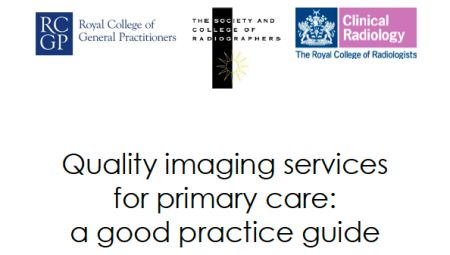A best practice guide on referring patients for imaging has been published by the Royal College of General Practitioners, the Royal College of Radiologists and the Society and College of Radiographers in the UK. The guide outlines improvements for patients by ensuring that timely and appropriate medical imaging services such as scans are provided to them and their referring doctors.
Patients needing urgent scans on the NHS should be seen within a week of being referred by their GP and routine screenings should be carried out within two weeks of a GP referral. Patients in rural areas would also have improved access under the recommendations.
Boosting communication through the open sharing of images and reports across local and regional healthcare networks, as well as making previous imaging history reports available to all providers, is also recommended to ensure patients receive the fastest possible diagnosis.
Underpinning the recommendations is the need to improve the clinical relationship and dialogue between primary care and radiology clinicians.
The Royal College of Radiologists Vice-President Dr Pete Cavanagh said: “Diagnostic radiology is at the heart of most patient pathways and it is important that those commissioning and providing such services have a clear, shared understanding of what needs to be in place for patient safety and to ensure the effective use of healthcare resources. It is essential that such services are commissioned in a way that ensures that the patient and referring doctor have access not only to an image and a report but the medical expertise of a clinical radiologist as well as other members of the radiology team.
“The shared goal of providing the highest quality, seamless care to patients is what has driven the work of the colleges and is why this guide is an important step in this aim.”
RCGP Chair Dr Clare Gerada, said: “By working together and using this guidance, GPs, radiologists and radiographers can really make a difference to patients needing scans, be it urgent or routine. It will help Clinical Commissioning Groups to highlight where current services need to change and where they could become more localised.
“Making the process more straightforward, and ultimately quicker, will also lead to greater peace of mind for patients as it will take away a lot of the anxiety and uncertainty that waiting times can cause.”
Director of Professional Policy at the Society and College of Radiographers, Prof Audrey Paterson, commented: “This guide provides a real opportunity to embed best practice for GPs and their patients in clinical radiology departments across the country. Services may well find aspects of the guide challenging but their well established principles of effective team working and skills mix will enable them to more than rise to them, developing strong and effective partnerships with GPs and the Clinical Commissioning Groups as they do so.”
Quality Imaging Services for Primary care: A Good Practice Guide can be found at - www.rcgp.org.uk/commissioning, www.rcr.ac.uk and www.sor.org
Latest Articles
Imaging, Guidelines, UK
A best practice guide on referring patients for imaging has been published by the Royal College of General Practitioners, the Royal College of Radiologists...


























